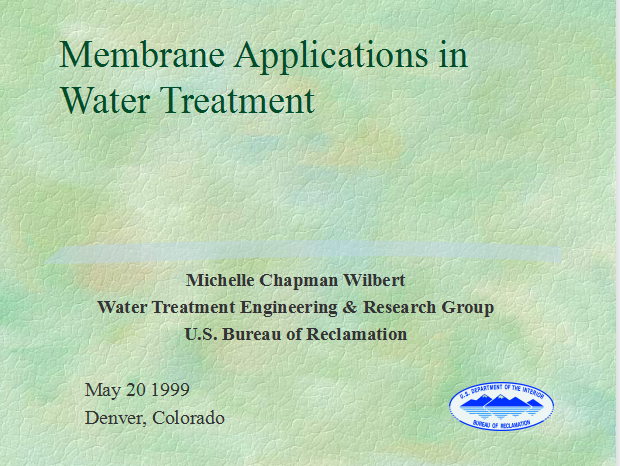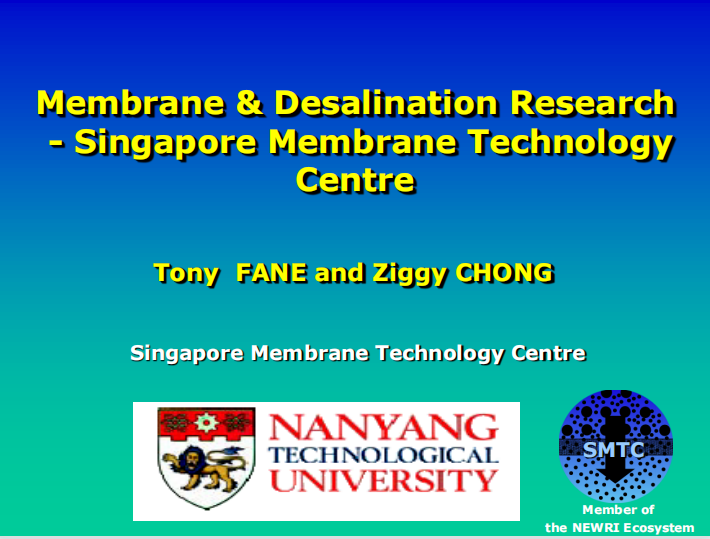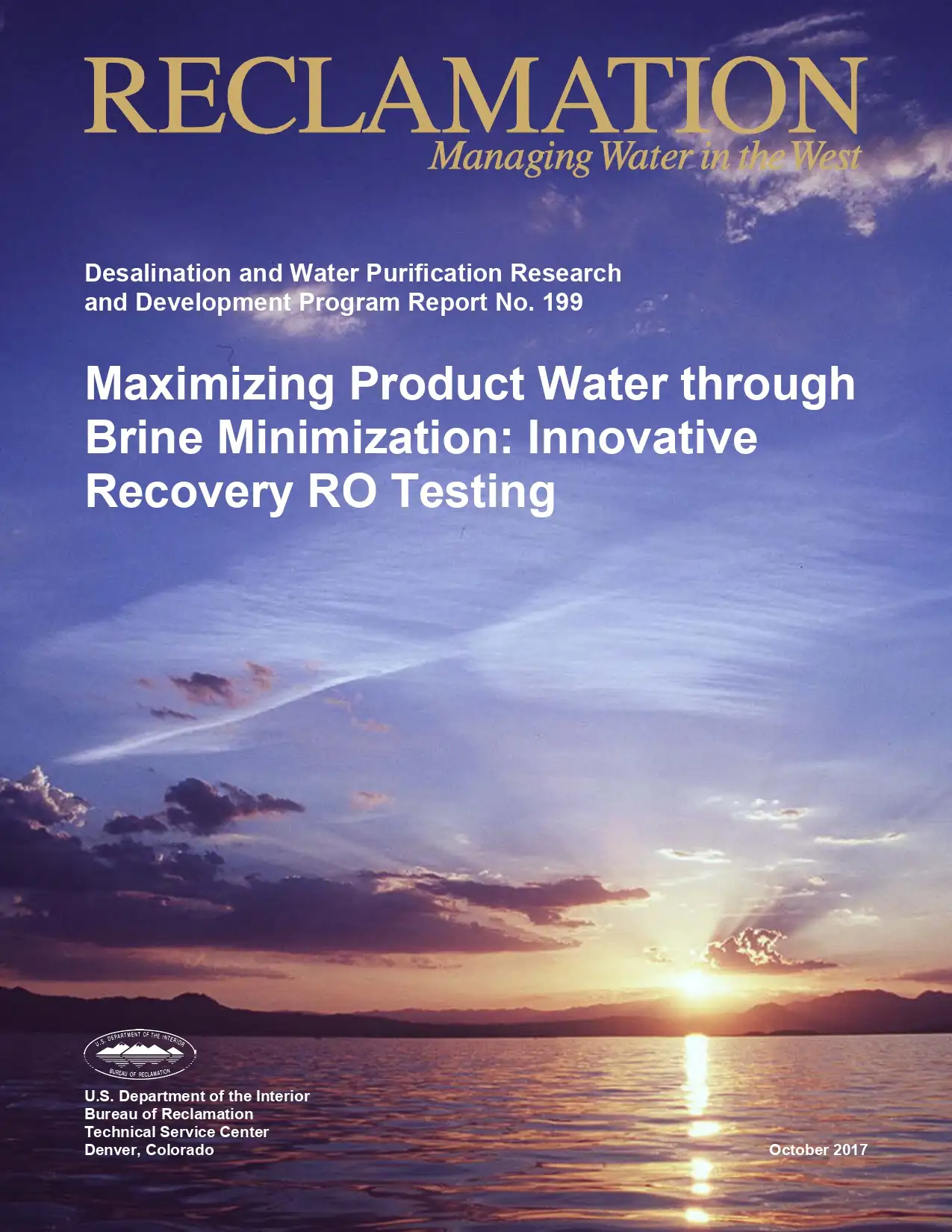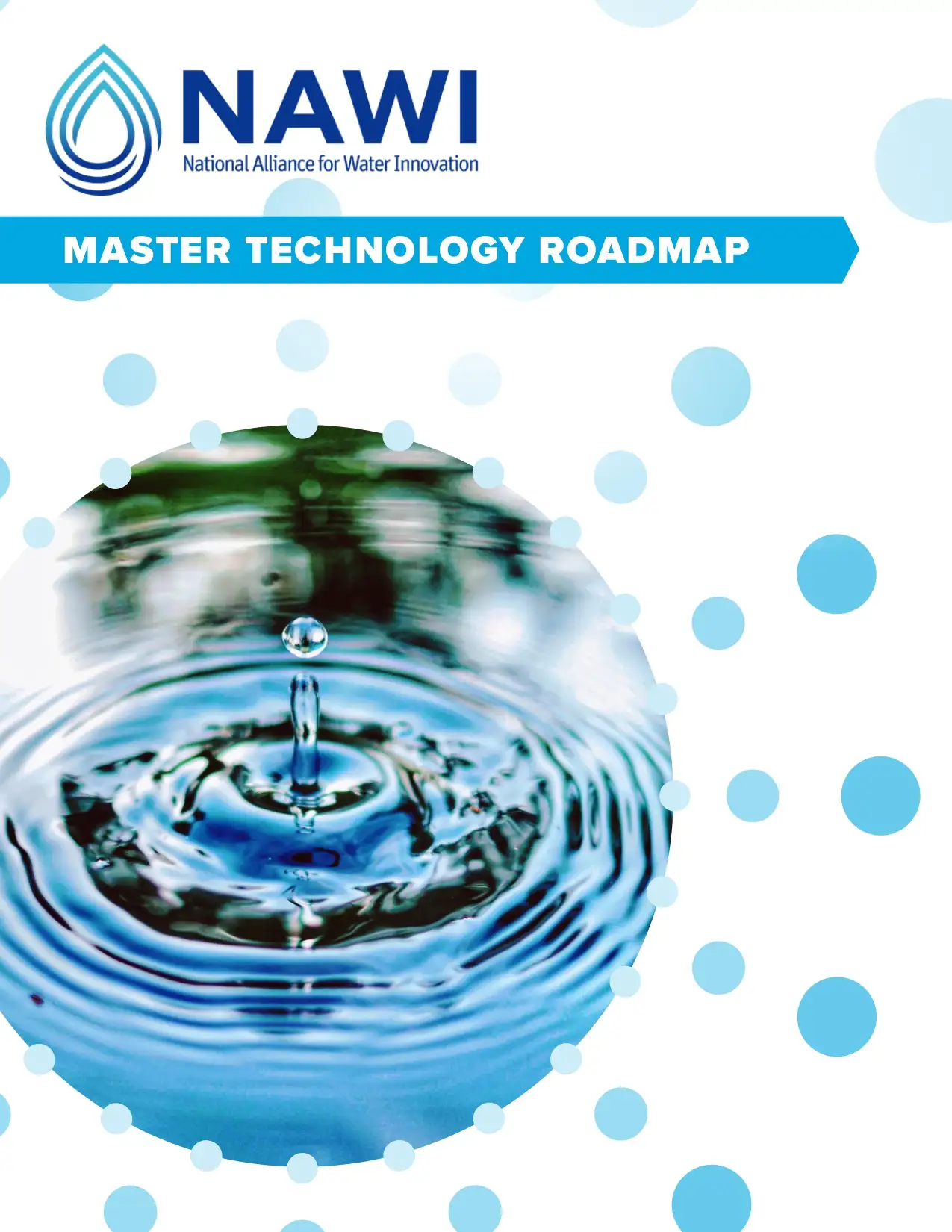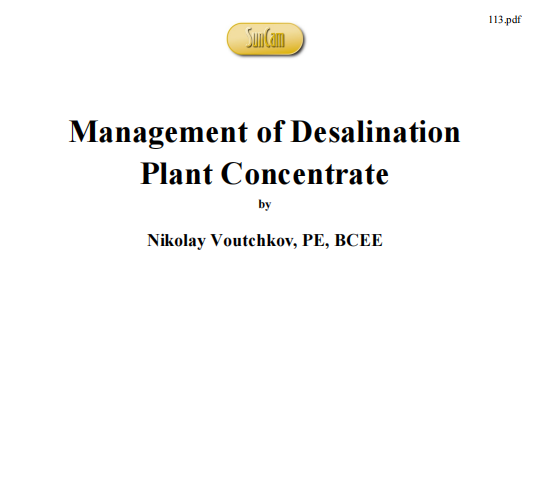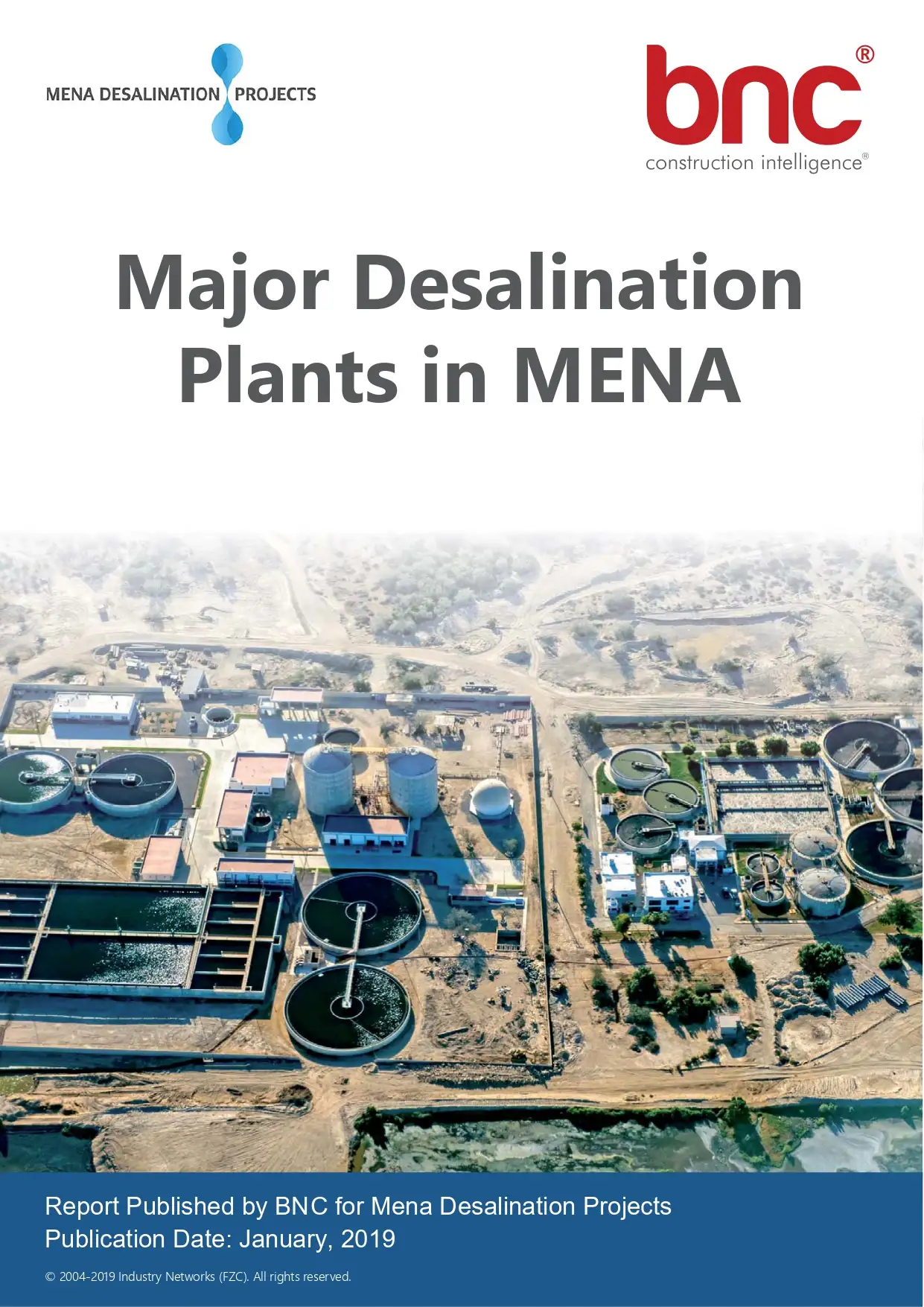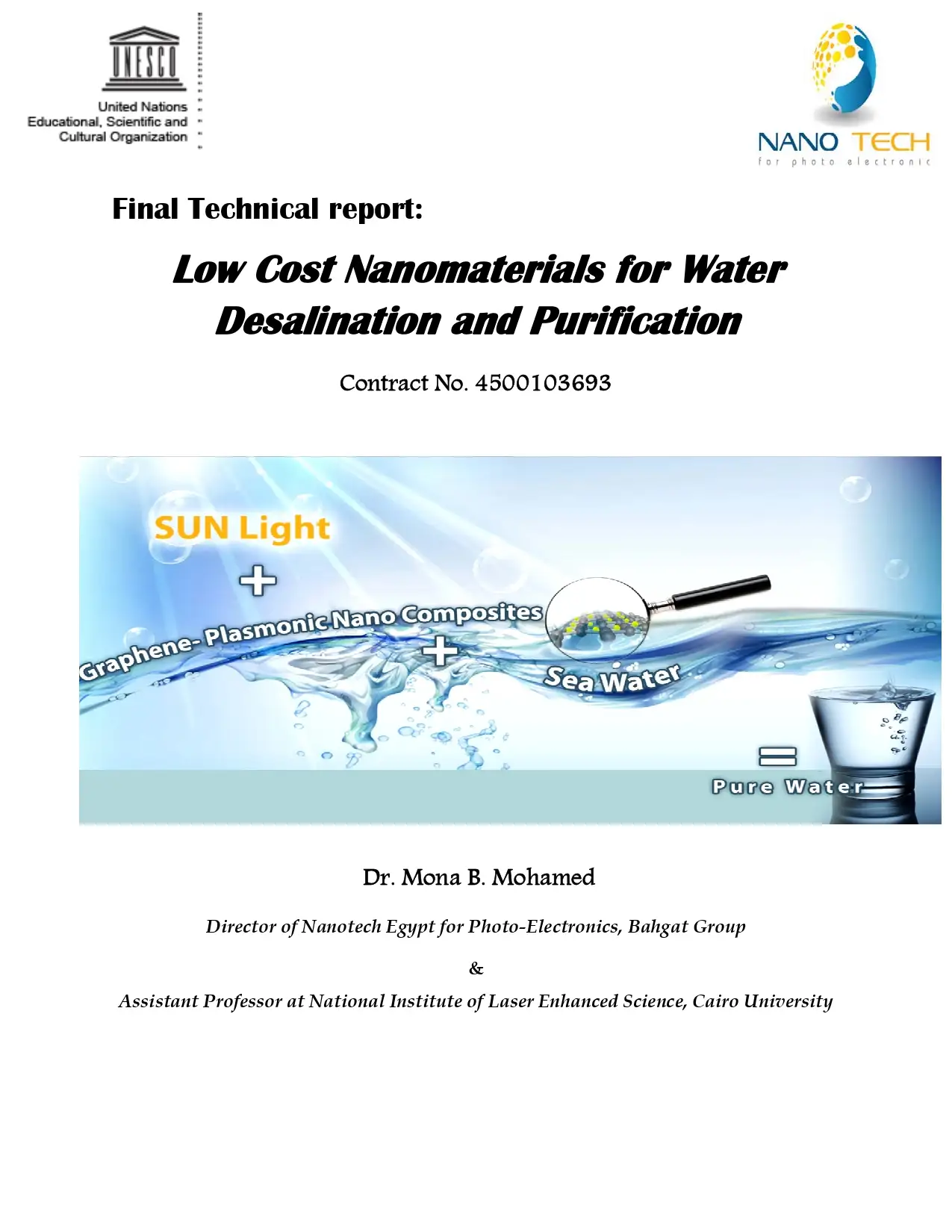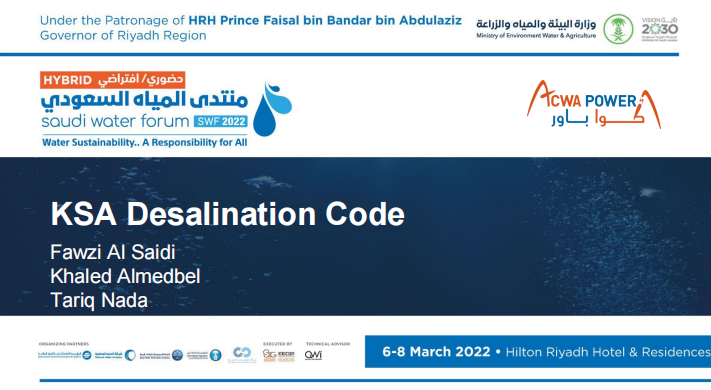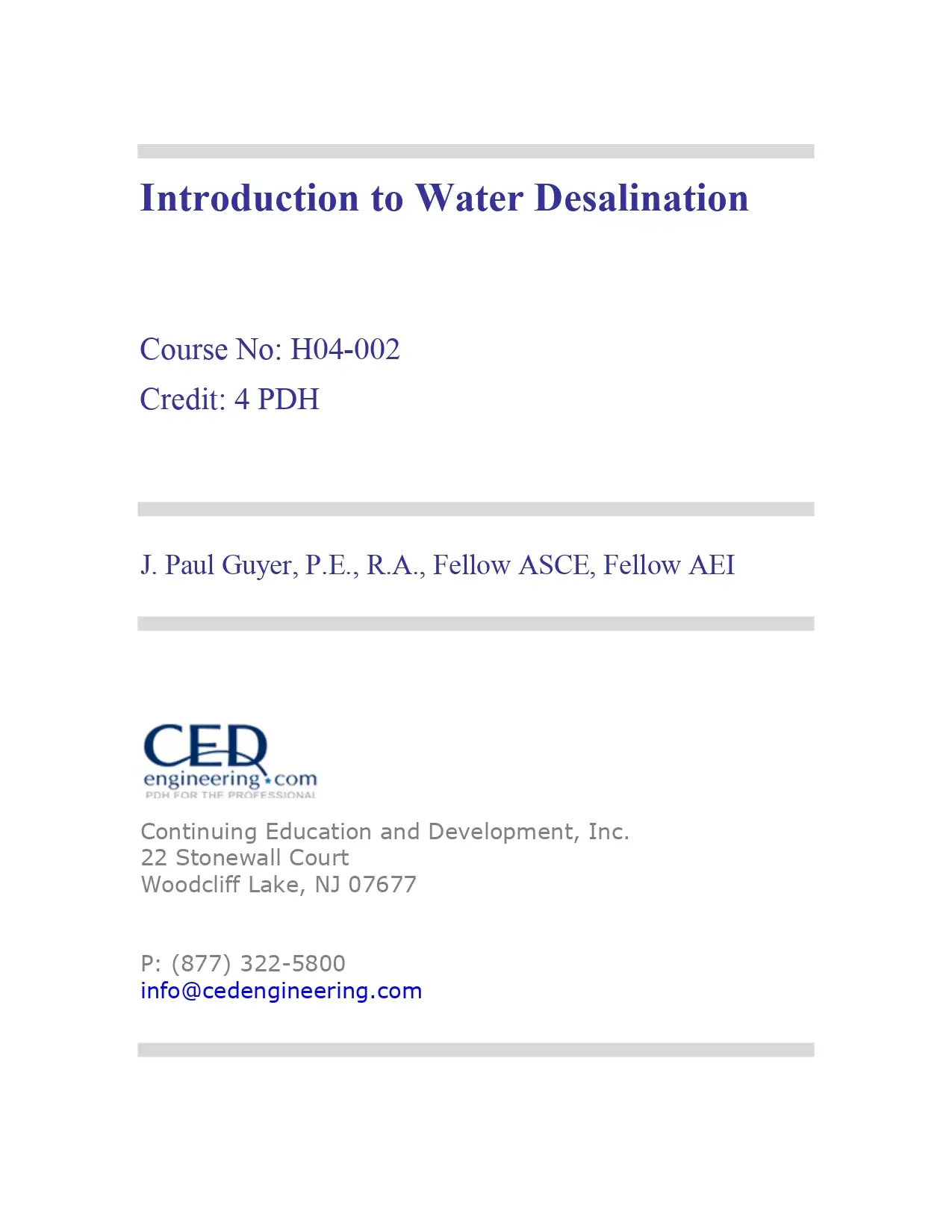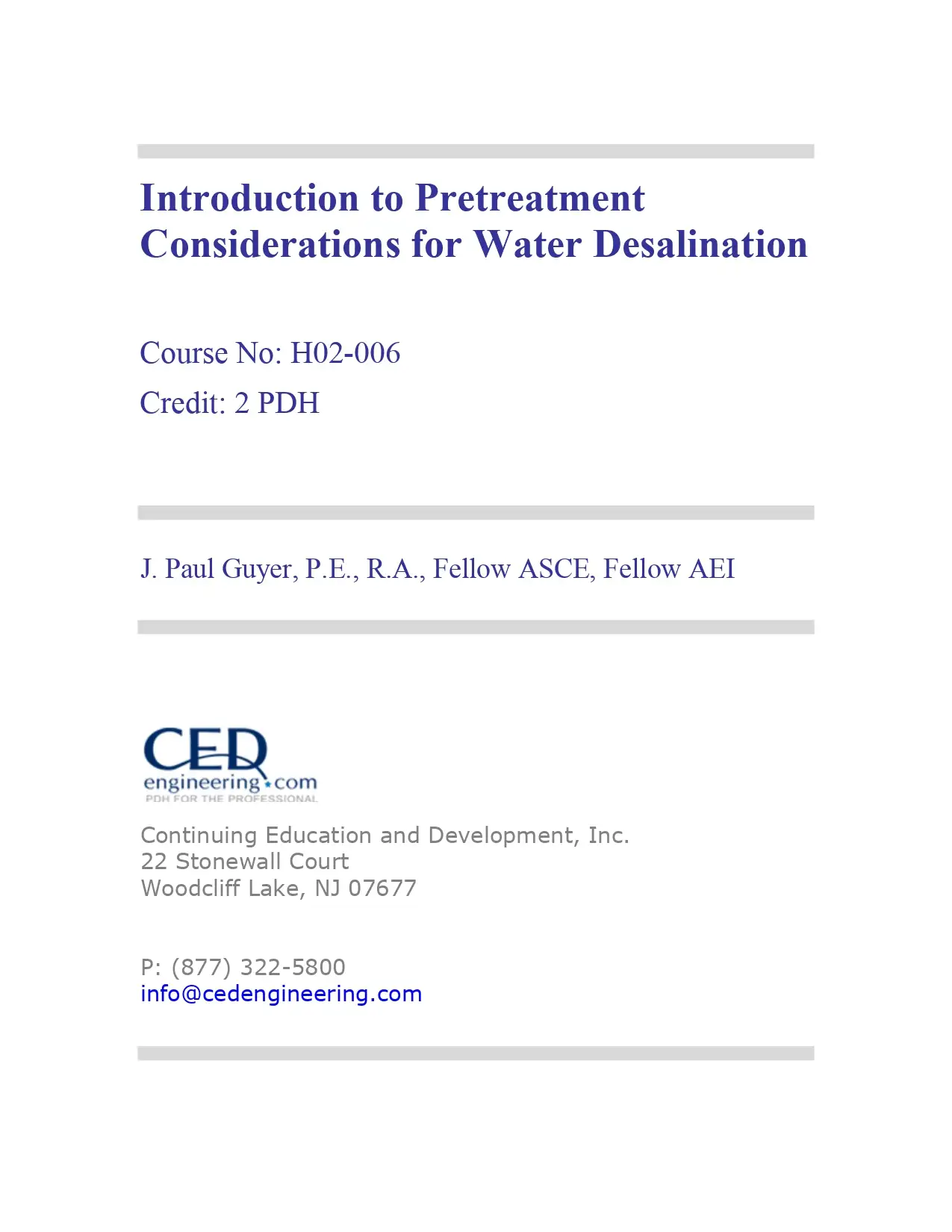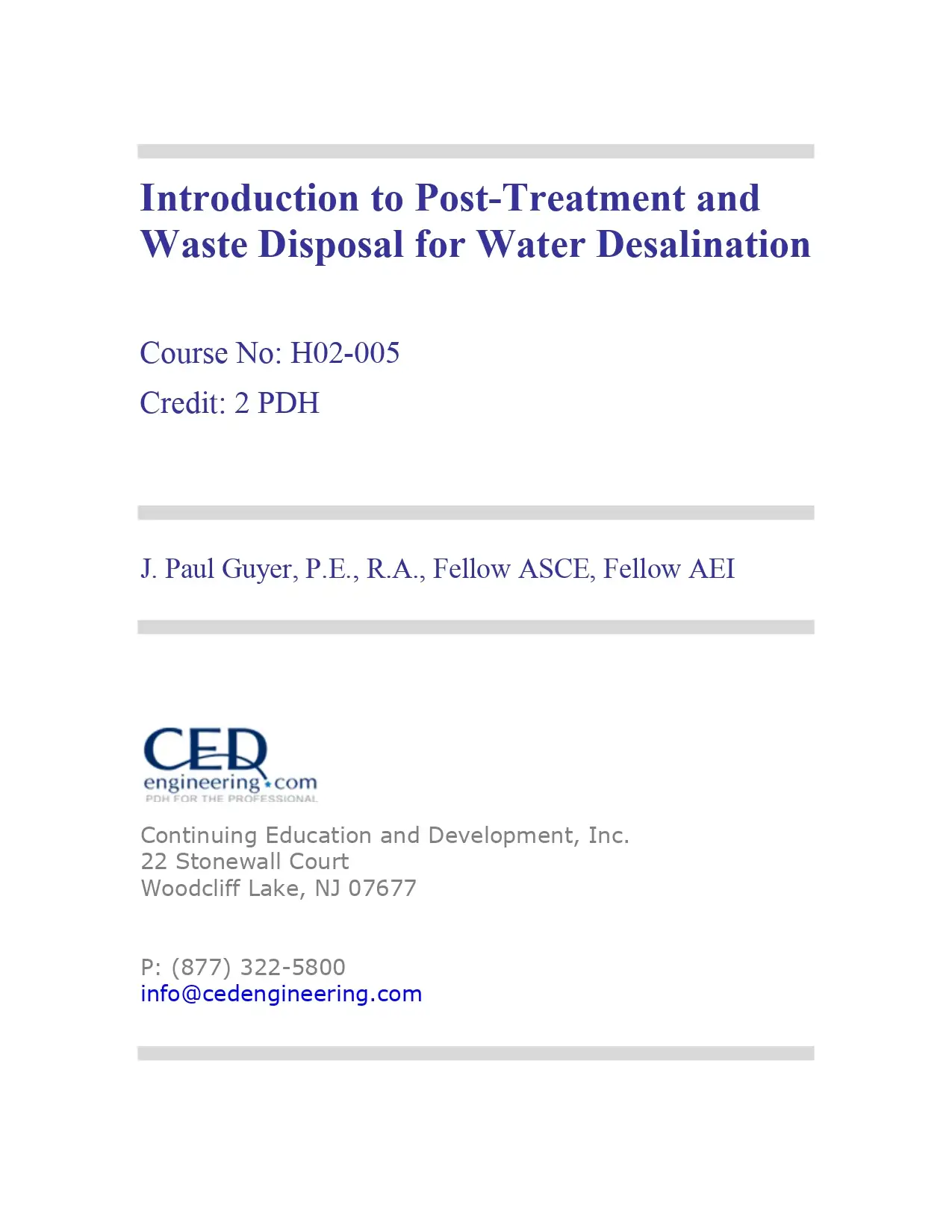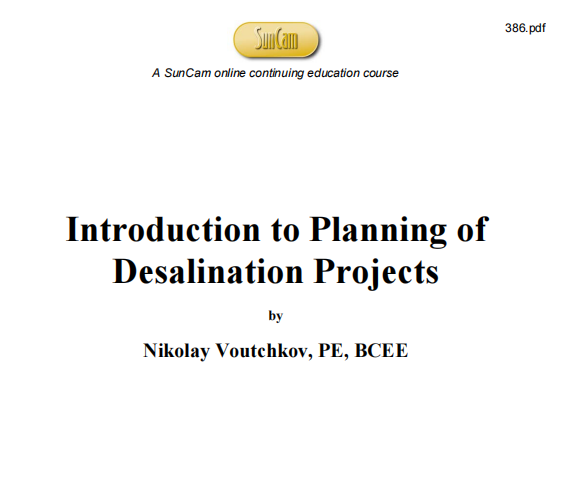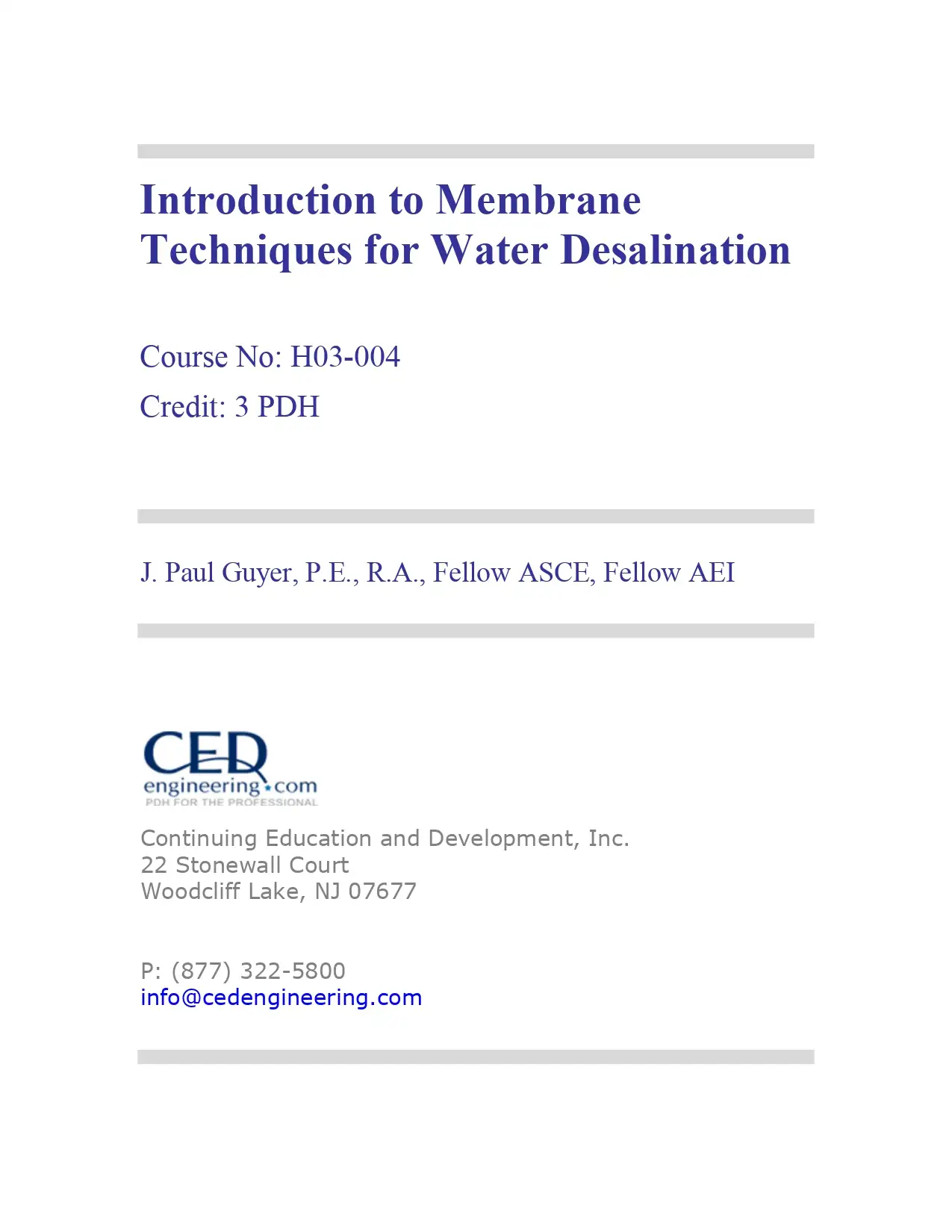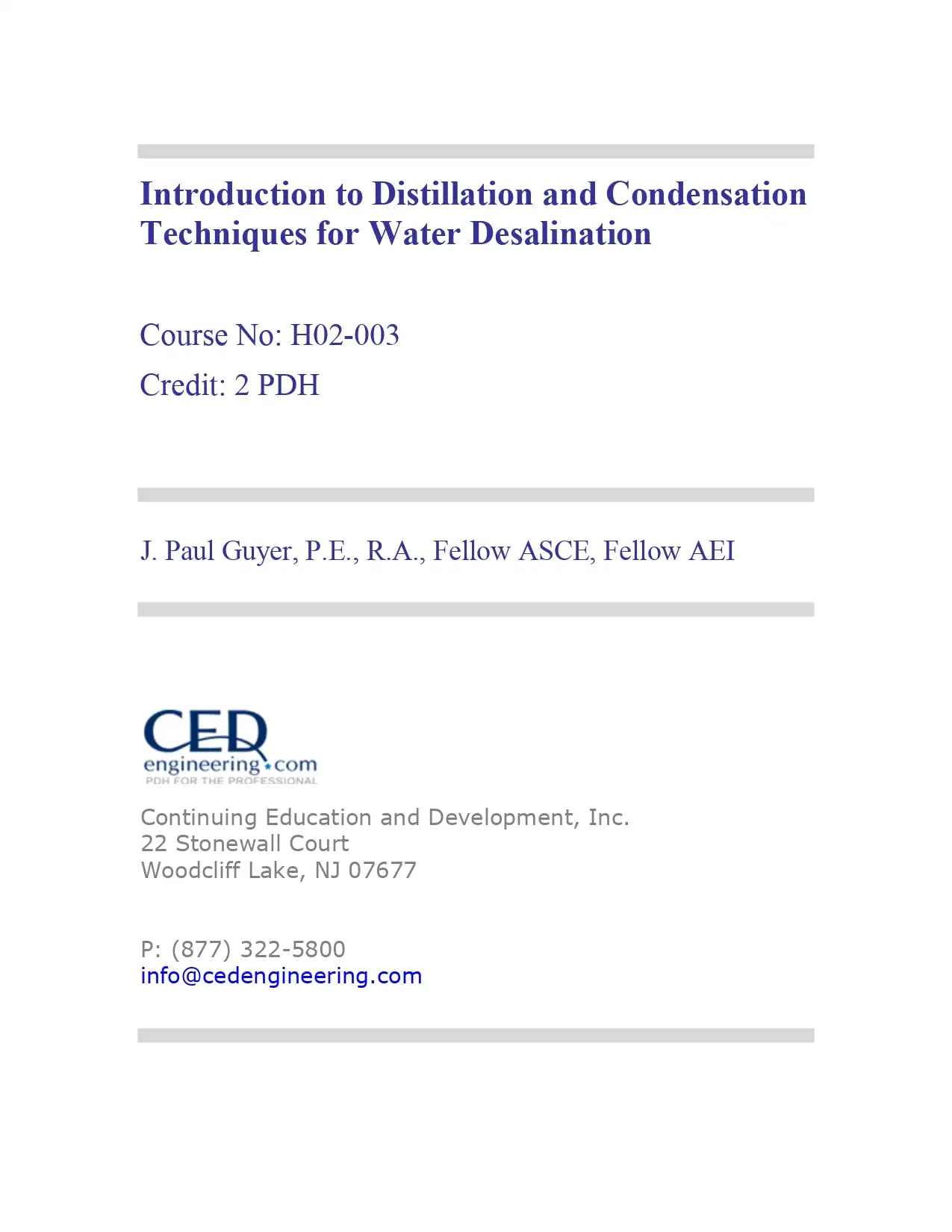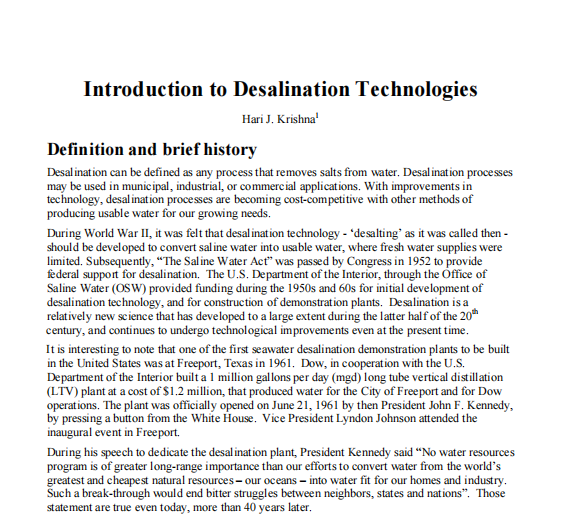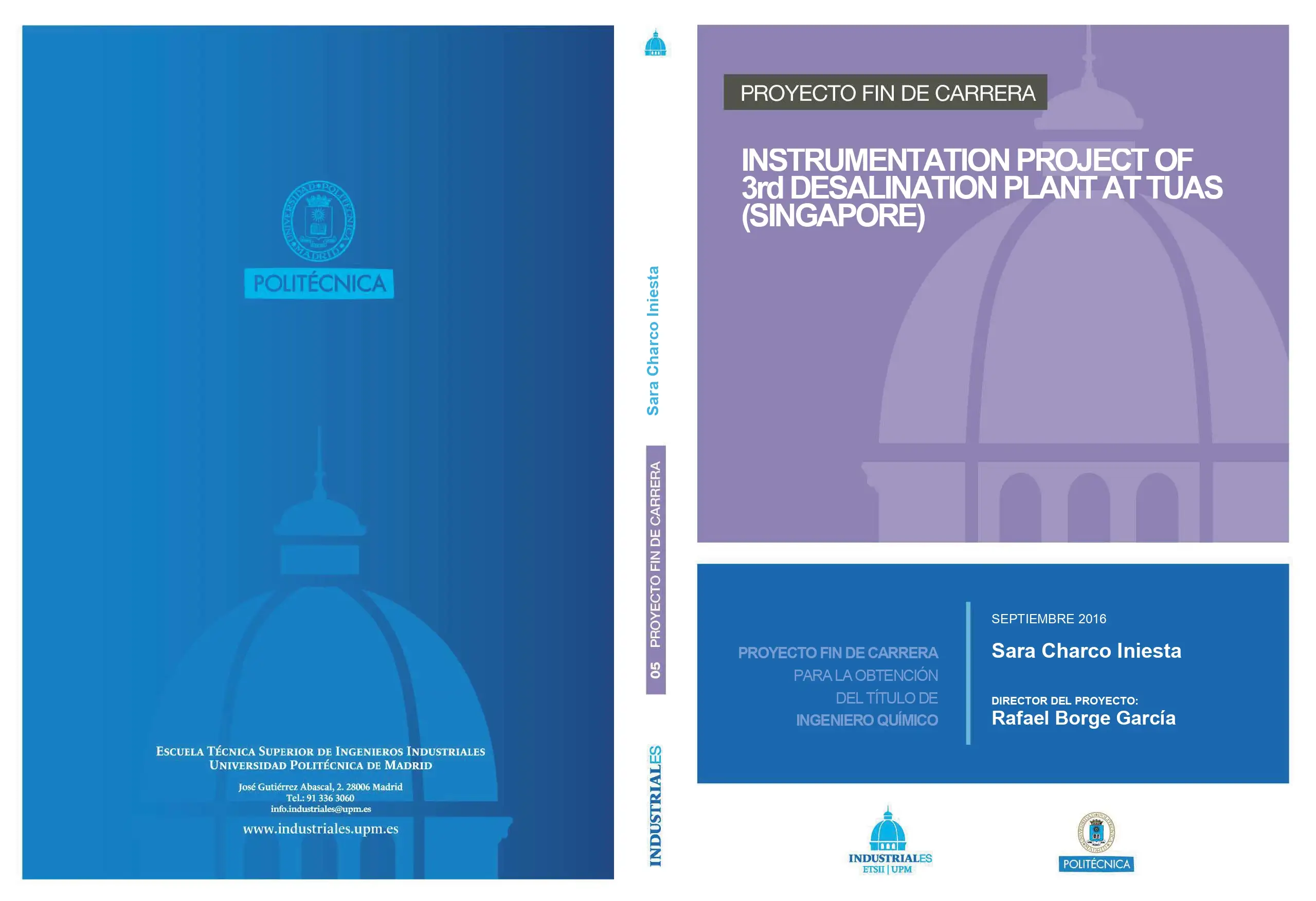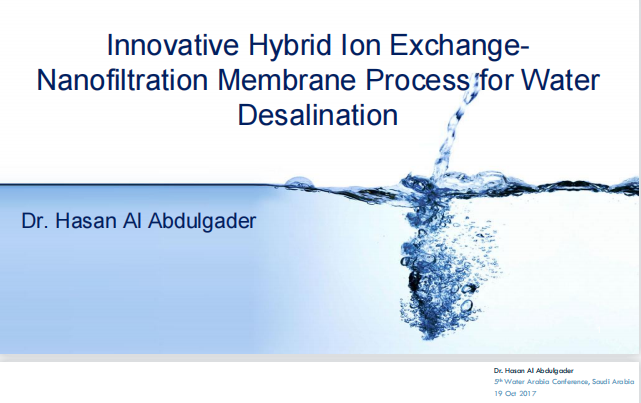Maximizing Product Water through Brine Minimization: Innovative Recovery RO Testing
ABSTRACT
Cost effective and innovative approaches are needed to reduce brine flows and enable discharge with low economic and environmental impact. Trussell Technologies and the Padre Dam Municipal Water District (Padre Dam) investigated methods to maximize the product water produced from the RO system that is part of the East County Advanced Water Purification (AWP) Program. This study compared the recoveries that can be achieved with conventional RO brine minimization technologies and with closed circuit desalination at Padre Dam’s AWP Demonstration Facility, and evaluated their performance with respect to operability, energy e fficiency, and water quality. First a closed circuit desalination (CCD) pilot plant was installed in early 2016 at Padre Dam’s AWP Demonstration Facility and tested for 8 months. Then the CCD pilot system was replaced with a conventional recovery RO system (CRRO), which was tested for 4 months. The CCD pilot system used more energy than the CRRO system, when comparing both systems operations at 95% overall recovery. The CCD system used an equalization tank between the primary RO system and the CCD pilot system as the semi-batch nature of the CCD process results in non constant feed flow rates, thus using more energy. Special water quality sampling, particularly on the CCD permeate, demonstrated that the CCD permeate exhibited much of the same water quality characteristics as other RO systems operating in potable reuse applications, thereby suggesting that using the CCD process within the existing and planned regulations is feasible.
Maximizing Product Water through Brine Minimization: Innovative Recovery RO Testing
ABSTRACT
Cost effective and innovative approaches are needed to reduce brine flows and enable discharge with low economic and environmental impact. Trussell Technologies and the Padre Dam Municipal Water District (Padre Dam) investigated methods to maximize the product water produced from the RO system that is part of the East County Advanced Water Purification (AWP) Program. This study compared the recoveries that can be achieved with conventional RO brine minimization technologies and with closed circuit desalination at Padre Dam’s AWP Demonstration Facility, and evaluated their performance with respect to operability, energy e fficiency, and water quality. First a closed circuit desalination (CCD) pilot plant was installed in early 2016 at Padre Dam’s AWP Demonstration Facility and tested for 8 months. Then the CCD pilot system was replaced with a conventional recovery RO system (CRRO), which was tested for 4 months. The CCD pilot system used more energy than the CRRO system, when comparing both systems operations at 95% overall recovery. The CCD system used an equalization tank between the primary RO system and the CCD pilot system as the semi-batch nature of the CCD process results in non constant feed flow rates, thus using more energy. Special water quality sampling, particularly on the CCD permeate, demonstrated that the CCD permeate exhibited much of the same water quality characteristics as other RO systems operating in potable reuse applications, thereby suggesting that using the CCD process within the existing and planned regulations is feasible.
Master Technology Roadmap
Clean water is critical to ensure good health, strong communities, vibrant ecosystems, and a functional economy for manufacturing, farming, tourism, recreation, energy production, and other sectors’ needs. Research to improve desalination technologies can make nontraditional sources of water (i.e., brackish water; seawater; produced and extracted water; and power sector, industrial, municipal, and agricultural wastewaters) a cost-effective alternative. These nontraditional sources can then be applied to a variety of beneficial end uses, such as drinking water, industrial process water, and irrigation, expanding the circular water economy by reusing water supplies and valorizing constituents we currently consider to be waste. As an added benefit, these water supplies could contain valuable constituents that could be reclaimed to further a circular economy.
Master Technology Roadmap
Clean water is critical to ensure good health, strong communities, vibrant ecosystems, and a functional economy for manufacturing, farming, tourism, recreation, energy production, and other sectors’ needs. Research to improve desalination technologies can make nontraditional sources of water (i.e., brackish water; seawater; produced and extracted water; and power sector, industrial, municipal, and agricultural wastewaters) a cost-effective alternative. These nontraditional sources can then be applied to a variety of beneficial end uses, such as drinking water, industrial process water, and irrigation, expanding the circular water economy by reusing water supplies and valorizing constituents we currently consider to be waste. As an added benefit, these water supplies could contain valuable constituents that could be reclaimed to further a circular economy.
Management of Desalination Plant Concentrate
Introduction:
Desalination of brackish water and seawater (collectively referred to as saline water) is becoming increasingly important method for production of fresh potable water in the US as many parts of the country, such as the arid southwest, Florida and Georgia, face limited availability of new low-cost fresh water resources traditionally used for municipal water supply. As compared to traditional water resources, such as groundwater aquifers, rivers, and lakes, desalination offers sustainable, reliable and drought-proof long term water supply alternative. Concentrate (brine) is a byproduct from the desalination of brackish and seawater desalination plants which is generated as a result of the salt-separation process. This byproduct contains the minerals and other constituents which are removed from the saline source water. At present, the desalination technology most widely used in the US is reverse osmosis (RO) membrane separation. Therefore, this course encompasses only management of concentrate from RO membrane desalination plants. Figure 1 shows the key waste streams generated by a typical desalination plant. Concentrate usually constitutes 90% to 95% of the total desalination plant discharge volume.
Management of Desalination Plant Concentrate
Introduction:
Desalination of brackish water and seawater (collectively referred to as saline water) is becoming increasingly important method for production of fresh potable water in the US as many parts of the country, such as the arid southwest, Florida and Georgia, face limited availability of new low-cost fresh water resources traditionally used for municipal water supply. As compared to traditional water resources, such as groundwater aquifers, rivers, and lakes, desalination offers sustainable, reliable and drought-proof long term water supply alternative. Concentrate (brine) is a byproduct from the desalination of brackish and seawater desalination plants which is generated as a result of the salt-separation process. This byproduct contains the minerals and other constituents which are removed from the saline source water. At present, the desalination technology most widely used in the US is reverse osmosis (RO) membrane separation. Therefore, this course encompasses only management of concentrate from RO membrane desalination plants. Figure 1 shows the key waste streams generated by a typical desalination plant. Concentrate usually constitutes 90% to 95% of the total desalination plant discharge volume.
Low Cost Nanomaterials for Water Desalination and Purification
Abstract:
While over 70 per cent of the Earth’s surface is covered by water, most of it is unusable for human consumption. Freshwater lakes, rivers and underground aquifers represent only 2.5 per cent of the world’s total freshwater supply. Unfortunately, in addition to being scarce, freshwater is also very unevenly distributed. The United Nations has compared water consumption with its availability and has predicted that by the middle of this century between 2 billion and 7 billion people will be faced with water scarcity. Increased demand for water is a global problem. In many parts of the world local demand is exceeding conventional resources. More economical use of water, reducing distribution losses and increased use of recycled water can help alleviate this problem but if there is still a shortfall then desalination of seawater or brackish water is a must. Many areas suffering from water shortages are also short of conventional energy resources and cannot afford expensive fossil fuels. More recently, there is remarkable awareness that even if fossil fuels were much cheaper, the burning of these fuels will contribute to climate change and global warming. For these reasons, the use of renewable energy for desalination has to be encouraged. Renewable energy is not a firm source of power and energy is expensive to store in large quantities. Water on the other hand is easily and cheaply stored. Thus, there is compatibility between renewable energy and desalination. This study aims to provide a review of the state of the art technologies of water desalination and discuss the benefits, disadvantage and economic impact of each. The key conclusion of this review is that desalination alone cannot deliver the promise of improved water supply unless that the desalination technology itself has evolved substantially. It has to be significantly cheaper, more reliable, less energy-intensive and more environmentally friendly. Nanotechnolgy would bring desalination technology to meet these requirements in the near future. Recently, new methodologies have been developed recently based on using nanotechnology for water desalination such as Reverse osmosis, Ultra- and Nano-filtration. Also, new technologies based on using solar concentrators for solar desalination have been developed. This report will highlight all of these new methodologies in details. New methodology which combines solar desalination and nanotechnology based on producing low cost nanocomposite to enhance the rate of solar thermal water desalination has been developed in our laboratory (patent pending). These new nanomaterials absorb light so strongly and convert it efficiently into heat energy.
Low Cost Nanomaterials for Water Desalination and Purification
Abstract:
While over 70 per cent of the Earth’s surface is covered by water, most of it is unusable for human consumption. Freshwater lakes, rivers and underground aquifers represent only 2.5 per cent of the world’s total freshwater supply. Unfortunately, in addition to being scarce, freshwater is also very unevenly distributed. The United Nations has compared water consumption with its availability and has predicted that by the middle of this century between 2 billion and 7 billion people will be faced with water scarcity. Increased demand for water is a global problem. In many parts of the world local demand is exceeding conventional resources. More economical use of water, reducing distribution losses and increased use of recycled water can help alleviate this problem but if there is still a shortfall then desalination of seawater or brackish water is a must. Many areas suffering from water shortages are also short of conventional energy resources and cannot afford expensive fossil fuels. More recently, there is remarkable awareness that even if fossil fuels were much cheaper, the burning of these fuels will contribute to climate change and global warming. For these reasons, the use of renewable energy for desalination has to be encouraged. Renewable energy is not a firm source of power and energy is expensive to store in large quantities. Water on the other hand is easily and cheaply stored. Thus, there is compatibility between renewable energy and desalination. This study aims to provide a review of the state of the art technologies of water desalination and discuss the benefits, disadvantage and economic impact of each. The key conclusion of this review is that desalination alone cannot deliver the promise of improved water supply unless that the desalination technology itself has evolved substantially. It has to be significantly cheaper, more reliable, less energy-intensive and more environmentally friendly. Nanotechnolgy would bring desalination technology to meet these requirements in the near future. Recently, new methodologies have been developed recently based on using nanotechnology for water desalination such as Reverse osmosis, Ultra- and Nano-filtration. Also, new technologies based on using solar concentrators for solar desalination have been developed. This report will highlight all of these new methodologies in details. New methodology which combines solar desalination and nanotechnology based on producing low cost nanocomposite to enhance the rate of solar thermal water desalination has been developed in our laboratory (patent pending). These new nanomaterials absorb light so strongly and convert it efficiently into heat energy.
KSA Desalination Code
The main purpose is:
To demonstrate a business case to authorities for revisiting the current Desal Code from a Transmitted Water Quality perspective. To improve and update Product Water Quality based on health and safety while maintaining both Drinkable Water parameters & pipeline requirements.
KSA Desalination Code
The main purpose is:
To demonstrate a business case to authorities for revisiting the current Desal Code from a Transmitted Water Quality perspective. To improve and update Product Water Quality based on health and safety while maintaining both Drinkable Water parameters & pipeline requirements.
Introduction to Planning of Desalination Projects
INTRODUCTION:
The purpose of project planning is to define the size, location and scope of the desalination project and chart a roadmap for project implementation. The first step of project planning is to determine the area that the desalination plant must serve, identify the type of water use and assess the water demand and quality requirements of each water customer over the useful life of the desalination project, typically 25 to 30 years. Once the project size and service area are determined, the next step of the planning process is to define the project. This requires identifying the most viable plant site location, intake and discharge type and configurations, characterization of source water quality and selection of the treatment process. The selection of the most cost-effective and environmentally sound desalination project location and configuration is based on a thorough evaluation of a number of alternatives for key desalination project components such as saline source water intake, concentrate discharge, pretreatment, RO system, post-treatment and product water delivery system. Once the project scope and schedule are defined, the project environmental impact assessment must be prepared. Project entitlements such as legal rights to land use, water rights for source water collection; easements for project-related infrastructure; rights-of-way; electric power supply agreement; and environmental permits, licenses and other regulatory, legal and contractual documentation, need to be obtained. This process can take several months to one of more years, depending on the governance environment and project size and complexity.
Introduction to Planning of Desalination Projects
INTRODUCTION:
The purpose of project planning is to define the size, location and scope of the desalination project and chart a roadmap for project implementation. The first step of project planning is to determine the area that the desalination plant must serve, identify the type of water use and assess the water demand and quality requirements of each water customer over the useful life of the desalination project, typically 25 to 30 years. Once the project size and service area are determined, the next step of the planning process is to define the project. This requires identifying the most viable plant site location, intake and discharge type and configurations, characterization of source water quality and selection of the treatment process. The selection of the most cost-effective and environmentally sound desalination project location and configuration is based on a thorough evaluation of a number of alternatives for key desalination project components such as saline source water intake, concentrate discharge, pretreatment, RO system, post-treatment and product water delivery system. Once the project scope and schedule are defined, the project environmental impact assessment must be prepared. Project entitlements such as legal rights to land use, water rights for source water collection; easements for project-related infrastructure; rights-of-way; electric power supply agreement; and environmental permits, licenses and other regulatory, legal and contractual documentation, need to be obtained. This process can take several months to one of more years, depending on the governance environment and project size and complexity.
Introduction to Desalination Project Design and Delivery
Introduction:
Once the desalination plant service area, location, site, source water quality, product water quality and concentrate water quality are determined, and the intake and discharge type and configuration are selected, the next step of the desalination project planning process is to complete conceptual plant design. The conceptual design includes the type and sequence of the treatment processes and equipment, facility and equipment design criteria and incorporates preliminary plant site layout and hydraulic profile. It also includes project capital and O&M cost estimates and the project implementation schedule. Furthermore, the conceptual design addresses the type of technology and equipment for energy recovery from the plant concentrate, post-treatment of the plant RO permeate, handling and disposal of the solid and liquid waste streams generated during source water pretreatment and membrane cleaning and finally, plant product water storage and delivery systems. The conceptual plant design process takes under consideration the physical, operational and environmental constraints imposed on the project, and usually involves initial development of several project alternatives, followed by selection of the most viable alternative based on a set of criteria. This includes capital and O&M costs, size of the overall plant site footprint, environmental impacts, carbon footprint of plant, ease of plant operation and maintenance, overall plant performance in terms of energy and chemical use, plant fresh water production reliability, redundancy and spare capacity, plant expansion and phasing flexibility and ability of the proposed plant design and facility configuration to accommodate future technologies and equipment.
Introduction to Desalination Project Design and Delivery
Introduction:
Once the desalination plant service area, location, site, source water quality, product water quality and concentrate water quality are determined, and the intake and discharge type and configuration are selected, the next step of the desalination project planning process is to complete conceptual plant design. The conceptual design includes the type and sequence of the treatment processes and equipment, facility and equipment design criteria and incorporates preliminary plant site layout and hydraulic profile. It also includes project capital and O&M cost estimates and the project implementation schedule. Furthermore, the conceptual design addresses the type of technology and equipment for energy recovery from the plant concentrate, post-treatment of the plant RO permeate, handling and disposal of the solid and liquid waste streams generated during source water pretreatment and membrane cleaning and finally, plant product water storage and delivery systems. The conceptual plant design process takes under consideration the physical, operational and environmental constraints imposed on the project, and usually involves initial development of several project alternatives, followed by selection of the most viable alternative based on a set of criteria. This includes capital and O&M costs, size of the overall plant site footprint, environmental impacts, carbon footprint of plant, ease of plant operation and maintenance, overall plant performance in terms of energy and chemical use, plant fresh water production reliability, redundancy and spare capacity, plant expansion and phasing flexibility and ability of the proposed plant design and facility configuration to accommodate future technologies and equipment.
Innovative Hybrid Ion Exchange Nanofiltration Membrane Process for Water Desalination
INTRODUCTION:
- Word population > 7,000,000,000 and increasing.
- Rapidly diminishing recourses of clean and potable water.
- Higher rate of water consumption in developing countries.
- Desalination is the one of the most important solutions for the water crises.
- Desalination accounts for >55% of potable water consumption in the country.
- Current desalination technologies is hampered by high energy consumption.
Innovative Hybrid Ion Exchange Nanofiltration Membrane Process for Water Desalination
INTRODUCTION:
- Word population > 7,000,000,000 and increasing.
- Rapidly diminishing recourses of clean and potable water.
- Higher rate of water consumption in developing countries.
- Desalination is the one of the most important solutions for the water crises.
- Desalination accounts for >55% of potable water consumption in the country.
- Current desalination technologies is hampered by high energy consumption.


